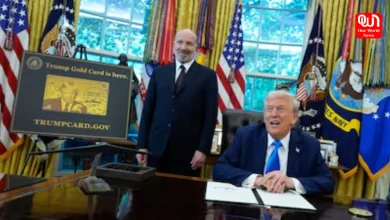5 Myths of Indian Real Estate Market Busted

5 Tips to help you find your dream palace
The real estate sector of India is a labyrinth of myths and beliefs; so-called “reality” that people seem to believe in. As an obvious consequence, one follows another blindly leading to undesirable consequence when investing in a residential project. Such myths stand true for a number of buyers and are related to a set of unique and unseen circumstances, where reality at the hands of real estate dealers can be misleading. Hence, it becomes utmost necessary that you exercise extreme caution and ask clearly before you shell out money on any project. Here’s a look a 5 common myths of Indian real estate market that you need to know.
Coverage of RERA for All Housing Projects
The announcing of RERA (Regulation and Development Act) has ushered in great relief for all home buyers across the country. However, the common myth that everyone seems to go with is that RERA covers all housing projects. Well, that, not entirely true. The coverage of RERA is subjected to a minimum of 500 square meter property or more than that. As such, any housing project that aspires to comply with RERA, demands the builder to register the property with the authority. Before one invests in a property, ensure the housing project to be duly registered with the regulator for the state. RERA has made it mandatory for all residential and commercial projects, where the land area is 500 sq. metres or more or any apartment having more than eight flats, to be registered with the regulator before the project commences.
Housing Projects That Are Under Construction Are Safe Under RERA
Much before RERA came in; a good number of builders were reported to have defaulted in completing their projects. As an obvious consequence, it left things in jeopardy. Hence, buyers use to opt for ready to move in properties, which any day is a much less riskier option to consider. The truth is, RERA has been subjected to major dilution across prominent states in India in order to favour a string of builders. In some places, it exists as a fake construct, a shadow without the object. With ready to move in apartments, one gets assured of things to believe, as they can see it right in front of their eyes; compared to an under-construction property, which is still a risky proposition. Buyers need to work with reputed real estate developers in Kolkata who are well-capitalized and have shown diversification across their offering, with excellent project completion record in the past.
Subvention Schemes Lead To Cost-Cutting
Subvention schemes like no EMI to be paid till you get the possession of the flat is always a hit with home buyers. Usually, under such scenarios, a builder proposes a buyer to pay anywhere between 15-30 per cent of the price as a booking amount. The balance is taken care of by a bank under a loan agreement that involves three parties, namely the developer, the bank itself and the buyer. The project while still under construction, the interest on the loan is borne by the builder. On the other hand, the bank disburses the loan partly by looking at the progress of the construction. So, the buyers repaying mode begin right after the handover is done. Looks like a win-win situation. But, hold on. Does that really save your money? All such possession-based plans are clever hatches from builders to make investors stay tied to one project for a long time. Furthermore, the discount level offered is usually much lower compared to regular down payment based schemes. To sum up, the buyer actually ends up paying the whole amount of EMI for the loan as the principal amount never gets reduced until the actual repayment starts. To make matters worse, one’s credit score also takes a hit, if the builder is late in paying the pre-EMI amount to the bank.
Read more: What is a Black Friday Sale and how it got its name?
Metro Cities Are the Best Possible Investment Grounds
There is absolutely no doubt that having a home in a Tier 1 metro city has an advantage. But, with emerging times, investment in Tier 2 and Tier 3 cities are also a profitable option in the long run. The growth corridor in Tier 2 or Tier 3 area is a trade-off that’s all the way worthwhile. With skyrocketing property prices in metro cities, one actually ends up paying for the locality that he chooses to live in and not the property he purchased. Hence, investing in emerging areas where micro markets exist is always a good option if you are looking to save your hard-earned money.
Renting Is Better Than Buying
This is a common myth that has managed to grapple the minds of many millennials. Stay in rent, retire early and invest your earnings in stocks –that’s the new uber-cool definition of life these days. However, such a mindset takes a solemn turn as one grows older and looks for certainty. Considering the fact that you have lived in one city for more than 10 years, owning a property seems to be a much viable option than paying towards rent, an investment that is never going to come back to you in any form of return, whatsoever. Nevertheless, buying a home can always be a challenging affair unless an individual has done really well on the professional side and in his investments. Real estate investment, no matter what, is a performing asset. Besides acting as a roof to support one’s family, you will always have an option to rent out the property you bought for a steady flow of income that will last a lifetime. Any rental outgo is nothing but an investment that falls dead in a way that it pays towards immediate need but gives no substantial return, except for HRA tax benefits.
If you have been looking to buy a property or currently staying rent, it probably time to unwrap your mind off the myths encircling the real estate market. Before you dive in, it’s necessary to know where you are investing and what good it will bring to you in the long run.
Have a news story, an interesting write-up or simply a suggestion? Write to us at info@oneworldnews.com







